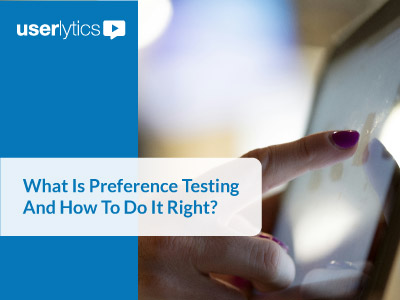In this blog post you will find:
1. The Importance of Recruiting the Right Participants for a Research Study
2. Main Challenges When Recruiting Participants for Research
3. Effective Approaches to Recruit Participants
4. The Key Methods to Recruit Eligible Participants for Research
5. Conclusion – Recruiting Participants
Today, innovation and creativity reign supreme, and understanding your users is the key to building valuable products. However, you can’t always know what your users need, want, or expect.
To craft digital experiences that truly resonate with your audience, you need to dive deep into the minds of your users. Enter UX research participants, those who actively engage in the research process to provide insights and feedback on a product or service.
But finding participants for UX research studies can be a difficult task. So, in this blog post, we go over how to recruit the perfect participants for your UX research projects.
The Importance of Recruiting the Right Participants for a Research Study
Recruiting the right participants for a user research study is of paramount importance for several reasons.
Representative data
The quality and reliability of research findings depend on having a sample that accurately reflects the target population.
Selecting the right participants ensures that your data is representative and can be generalized to a broader group.
If the participants are not representative, your findings may not be applicable to the wider context.
Accurate insights
The right participants are more likely to provide accurate and insightful information. They have a vested interest in the research topic, which can lead to more honest and relevant responses.
This, in turn, results in a higher quality of data and more meaningful conclusions.
User-centered design
In fields like user experience (UX) research, the right participants are crucial for designing products or services that genuinely meet users’ needs.
Selecting individuals who represent the actual user base ensures that your design decisions are in sync with their preferences and behaviors.
Efficiency
Recruiting the right participants saves time and resources. If you target the wrong group, you may end up with data that doesn’t answer your research questions, necessitating additional rounds of research and recruitment.
This is not only costly but can also lead to delays in your project.
Ethical considerations
Selecting appropriate participants is an ethical responsibility. Informed consent and a clear understanding of the research’s purpose and potential impacts are essential.
Recruiting the right participants means you’re involving individuals who can make informed decisions about their participation.
Minimizing Bias
Proper participant recruitment helps reduce bias in your data. Selecting participants who have no inherent bias or conflict of interest related to your research topic ensures that your findings are not skewed in a particular direction.
Improved validity
The right participants enhance the internal and external validity of your study. Internal validity relates to the accuracy of your findings within your research context, while external validity concerns the generalizability of those findings to a broader population.
Recruiting the right participants enhances both aspects of validity.
Enhanced engagement
Participants who are a good fit for the research are more likely to engage actively in the study. They can provide valuable feedback, insights, and details that may be missed with less suitable participants.
The importance of recruiting the right participants for a research study cannot be overstated. It impacts the validity, quality, and relevance of your findings, and it can ultimately determine the success and impact of your research project.
Careful participant selection is the foundation upon which valuable and meaningful research is built.
Main Challenges When Recruiting Participants for Research
Participant recruitment for user research can be a pain.
Participant Availability
Finding potential participants who match your criteria and are available during the time frame of your user testing project can be difficult. People have busy schedules, and aligning their availability with your research schedule can be a significant hurdle.
Representativeness
Ensuring that your participant pool is representative of your target user group can be challenging. You want to avoid bias in your findings, so recruiting a diverse set of participants is crucial. However, this can be difficult, especially for niche or hard-to-reach user groups.
Recruitment Bias
The methods you use to recruit participants can introduce bias. For example, if you primarily rely on online advertising or social media, you may inadvertently exclude individuals who are not active in those spaces. Finding participants hence become a challenge.
No-Shows
Even when participants express interest and agree to participate, there is no guarantee that they will actually show up for the research sessions. This can be frustrating and impact the study’s schedule and budget.
Participant Motivation
Some participants may not be genuinely motivated to provide useful feedback. They may participate for compensation or other incentives without a genuine interest in the research topic, leading to low-quality data.
Privacy and Confidentiality Concerns
Participants may have concerns about their privacy or the confidentiality of the information they provide during the research. Addressing these concerns is essential to recruit and retain participants.
Participant Fatigue
In cases where you need to repeatedly engage the same participants, such as in longitudinal studies, participant fatigue can set in. This can affect the quality of their feedback and the overall success of the study.
Geographic and Cultural Barriers
If your research involves participants from different geographical locations or cultural backgrounds, you may face challenges related to language barriers, time zone differences, and varying cultural norms and expectations.
Recruitment Costs
Recruiting participants, especially in niche markets, can be costly. Incentives, compensation, and other expenses can strain the research budget.
Overcoming Incentive Mismatch
Finding the right balance in incentives to motivate participants without inducing participation solely for the rewards can be tricky. Offering too much can attract those who are less interested in the research itself.
Legal and Ethical Considerations
Complying with legal and ethical guidelines, such as obtaining informed consent and protecting participant data, can be complex and time-consuming.
Scheduling and Coordination
Coordinating schedules between researchers, participants, and any stakeholders involved can be a logistical challenge, especially in larger research projects.
Recruitment Source Diversity
Relying on a limited number of sources for recruitment can restrict the diversity of your participant pool. Diversifying your recruitment channels can help address this challenge.
Effective Approaches to Recruit Participants
When recruiting research participants for a research study, there are several best practices you should follow to meet success.
Clearly Define Your Research Goals
Before you start recruiting, have a clear understanding of your research objectives, the type of participants you need, and the specific criteria they should meet.
Defining your research goals helps ensure that the participants you recruit are relevant to your study. Without clear goals, you may end up with participants who don’t match the target audience, making your research less useful.
Honed Screening Process
Use screening questions to filter out participants who do not meet your specific criteria. This can save both your time and the participants’ time.
A thorough screening process can save time and resources by eliminating participants who don’t meet your criteria. This prevents you from conducting interviews or observations with individuals who won’t provide valuable insights.
Create Detailed Personas
Detailed personas provide a clear picture of your ideal users, including their demographics, behaviors, and needs. This helps in precisely targeting and recruiting participants who closely match these personas, ensuring that your research is relevant and representative of your user base.
Recruiting participants who closely resemble your personas ensures that the data collected during user research is directly applicable to your target audience. This leads to insights that are more likely to drive design and development decisions. You can also work with your existing customers.
Diversify Recruitment Channels
Using multiple recruitment channels allows you to reach a more diverse and representative pool of participants.
Different channels may attract individuals with varying backgrounds, experiences, and perspectives, ensuring a richer and more comprehensive dataset.
Relying on a single recruitment channel can introduce bias into your participant pool. By diversifying recruitment sources, you reduce the risk of selecting participants who share similar characteristics, behaviors, or opinions, which can lead to a more balanced and unbiased sample.
Leverage Existing User Base
Your existing users are already familiar with your product or service, making them well-suited for certain types of research, such as usability testing or feedback on new features.
This familiarity can expedite the research process as participants require less time to get acquainted with the product.
Recruiting from your existing user base can be more cost-effective than sourcing participants from scratch.
You can save resources on advertising, incentives, and initial outreach because you already have a contact point.
Incentives
Incentives provide a motivation for individuals to participate in your research. It compensates them for their time and effort, making them more willing to engage in your study.
Further, incentives can attract a more diverse group of participants. Without incentives, you may primarily get individuals who have a strong interest or a personal stake in your research, whereas incentives can help you reach a broader audience.
Pilot Testing
Pilot testing allows you to refine and improve your research materials, such as interview scripts, questionnaires, surveys, or usability test scenarios, before using them with the actual participants.
This can help ensure that your materials are clear, relevant, and effective in gathering the information you need.
The Key Methods to Recruit Eligible Participants for Research
Use Your Existing User Base
If you have an established user base, you can leverage your current customers or users as potential research participants. They are already familiar with your product or service, and this familiarity can lead to more in-depth and contextually relevant feedback.
Current users often have a vested interest in your product or service’s success. They are more likely to be engaged and motivated to participate in research activities, making it easier to gather valuable insights.
Focus on Email Lists
Use email marketing lists to reach out to your subscribers or customers who have expressed interest in research participation.
With email lists, you have direct access to the contact information of potential participants. This makes it easy to send invitations and reminders, streamlining the recruitment process. Further, sending emails is a cost-effective way to recruit participants.
You can eliminate the need for third-party recruitment services, saving both time and money.
Turn to Social Media
Promote your research opportunities on social media platforms such as Facebook, Twitter, LinkedIn, or Instagram. You can use both organic posts and paid advertising to expand your reach.
Social media platforms have extensive user bases, allowing you to access a wide and diverse pool of potential participants. This is especially beneficial if you need participants from various demographics or locations.
Take Part in Online Communities and User Groups
Participate in or partner with relevant online communities, forums, and discussion groups where your target audience congregates. Engage with the community and request participation.
Also, many products or industries have user groups or associations. These groups can be a valuable resource for recruiting participants with a specific interest or expertise.
Leverage Professional Networks
Reach out to professional networks or associations related to your research domain. This is particularly useful for B2B research.
Professional networks are populated by individuals who are often well-qualified and experienced in specific industries or fields. This allows you to access a niche and knowledgeable pool of potential participants.
Participate in In-Person Events
Attend conferences, trade shows, or local meetups to recruit participants who are already engaged in your field.
In-person events allow you to meet potential participants face-to-face, establishing a personal connection that can lead to greater trust and willingness to participate in your research.
You can engage with event attendees in real time, providing an opportunity to explain the research process, answer questions, and address concerns immediately.
Reach Out to Customer Support Channels
Collaborate with customer support teams to identify users who have expressed an interest in providing feedback or participating in research.
Customer support channels typically have direct access to your existing customers, who are often willing to provide feedback and insights, making them valuable potential participants.
Users may already have a level of trust and familiarity with your customer support team. When these teams recommend your research, it can boost participants’ confidence in the legitimacy of your research efforts.
Conclusion – Recruiting Participants
The process of recruiting participants for research is a critical and often complex component of any study. Whether you’re conducting user research, academic research, or market research, finding the right participants is key to the success of your project.
Recruitment is not just about numbers; it’s about finding the right individuals whose insights and experiences will drive your research forward. It’s about building trust, respecting participants’ time, and ensuring ethical conduct throughout the process.
As you embark on your research journey, remember that each study may present unique challenges and opportunities. Flexibility, adaptability, and a commitment to continuous improvement are essential.
Your participants are the cornerstone of your research, and by following the guidelines in this guide, you’ll be better equipped to recruit the right individuals, gather valuable insights, and make informed decisions to drive your research projects to success.




